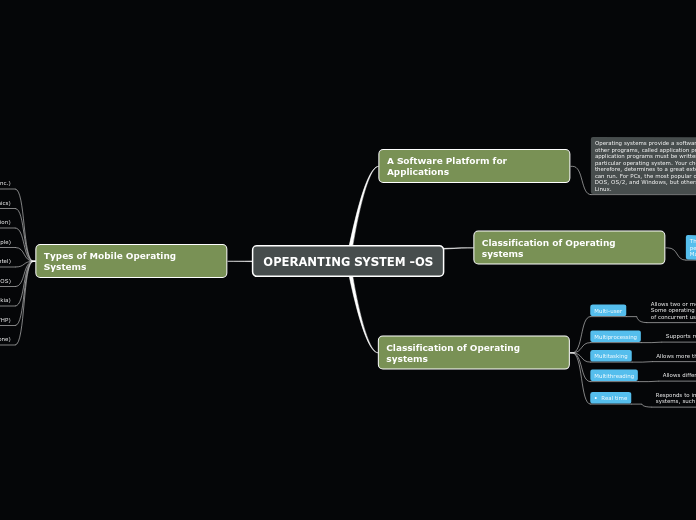OPERANTING SYSTEM -OS
A Software Platform for Applications
Operating systems provide a software platform on top of which other programs, called application programs, can run. The application programs must be written to run on top of a particular operating system. Your choice of operating system, therefore, determines to a great extent the applications you can run. For PCs, the most popular operating systems are DOS, OS/2, and Windows, but others are available, such as Linux.
Classification of Operating systems
The three most popular types of operating systems for personal and business computing include Linux, Windows and Mac
Windows
is a family of operating systems for personal and business computers.
Mac
OS is the official name of the Apple Macintosh operating system.
Linux
Linux is a freely distributed open source operating system that runs on a number of hardware platforms
Classification of Operating systems
Multi-user
Allows two or more users to run programs at the same time. Some operating systems permit hundreds or even thousands of concurrent users.
Multiprocessing
Supports running a program on more than one CPU
Multitasking
Allows more than one program to run concurrently
Multithreading
Allows different parts of a single program to run concurrently
• Real time
Responds to input instantly. General-purpose operating systems, such as DOS and UNIX, are not real-time.
Types of Mobile Operating Systems
1. Android OS (Google Inc.)
2. Bada (Samsung Electronics)
3. BlackBerry OS (Research In Motion)
4. iPhone OS / iOS (Apple)
5. MeeGo OS (Nokia and Intel)
6. Palm OS (Garnet OS)
7. Symbian OS (Nokia)
8. webOS (Palm/HP)
9. Windows Mobile (Windows Phone)
